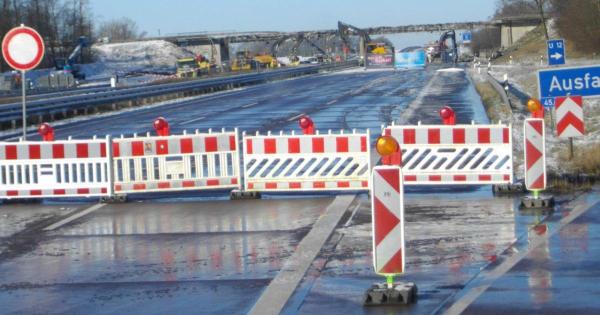
Germany: A1 closed for three weekends
In the coming weeks, drivers travelling through North Rhine-Westphalia will face major disruptions. The A1 motorway in the Unna area will be closed for three consecutive weekends. The closure is connected with the modernisation of two bridges.
❌First weekend: November 17
On November 17 (Sunday), the A1 motorway will be closed from 8:00 AM to 10:00 PM in both directions between the Dortmund/Unna junction and the Westhofen junction. The closure will be used to conduct some demolition work on the Liedbachtal bridge using explosives. The following diversion routes will be available:
◾ Through traffic will be diverted to the A45 and A2 motorways.
Diversion routes for drivers heading for Schwerte:
◾ traffic from the south: via the U71 from the A45 Schwerte-Ergste junction.
◾ traffic from the north: from the Dortmund/Unna junction via the B1 and B236.
❌Second weekend: November 29 – December 2
The motorway will be closed from 10:00 PM on Friday, November 29, until 5:00 AM on Monday, December 2. Initially, the section between the Kamen-Zentrum and Dortmund/Unna junctions will be closed, and on Sunday, December 1, at 8:00 AM, the closure will be extended in the northern direction to the Kamen junction and in the southern direction to the Westhofen junction.
❌Third weekend: December 6–9
The motorway will be closed from 10:00 PM on Friday, December 6, until 5:00 AM on Monday, December 9. During this time, the section of the motorway between the Kamen-Zentrum junction and Dortmund/Unna will be closed in both directions.
Further information regarding diversion routes for the second and third weekends will be announced at a later date.

France: an exemption from the Sunday driving ban in northern France for certain types of transports
In response to a bird flu epidemic, which has broken out in northern France, the authorities have introduced an exemption from the driving ban on Sundays and public holidays in the departments of Aisne, Nord, Oise, Pas-de-Calais and Somme until 6 January 2025. The exemption applies to vehicles (loaded or returning empty) transporting equipment, materials, products or vehicles necessary for cleaning poultry farms or places designated for this purpose.
In the event of an inspection, hauliers must provide proof that they are eligible for the exemption. A copy of the French decree must be on board the vehicle ➡ CLICK HERE TO DOWNLOAD.
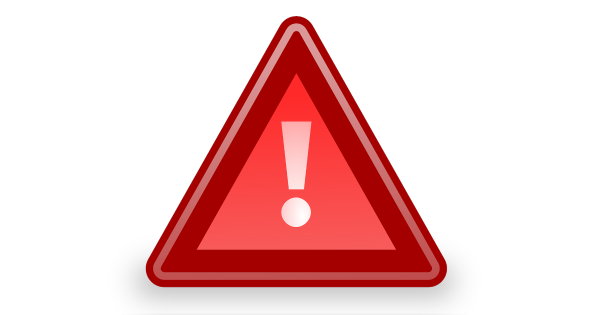
Spain: damaged bridge on the A7 – restrictions for HGV traffic in Valencia
Given traffic disruptions caused by the flooding, the General Directorate of Traffic has issued a resolution implementing extraordinary traffic management measures to minimise possible traffic problems that are likely to occur in the Valencia metropolitan area.
Damage sustained by the structure of the viaduct on the A-7 motorway at kilometre 336.8 (Quart de Poblet), which affects both lanes of the Valencia metropolitan bypass, will have an effect on long-distance traffic along the Mediterranean transport corridor.
The A-7 motorway is used by more than 77,000 vehicles per day, 25% of which are heavy goods vehicles. In addition, the port of Valencia, one of the most important ports in the country, is visited by 5,000 trucks per day.
Because the storms associated with the cut-off low (DANA), which occurred on the night of 29-30 October, have caused serious damage in Andalusia, Castile-La Mancha and the Valencian Community, the General Directorate of Road and Rail Transport has announced temporary exceptions to driving and rest times for freight transport ➡ CLICK
According to the resolution, no HGVs (laden or not) with a GVW of over 7.5 tonnes are allowed to use Valencian roads if their point of departure or destination is NOT located in the province of Valencia.
A number of alternative routes have been designated by DGT
▶️1. North-south direction:
• The Communities of Aragon and Catalonia via AP-2/A-2 towards Madrid. In the town of Sagunto, HGVs are not allowed to use AP-7; a diversion is available along the A-23 (Zaragoza).
• the Communities of Madrid A-3 and Castilla-La Mancha via the A-31 / A-30 Albacete-Alicante-Murcia and Almería.
▶️2. South-North direction
• The Communities of Andalusia and the Region of Murcia via the AP-7/A-7, A-31 Albacete and A-3 Madrid; the driving ban on the AP-7 applies in the town of Picassent with a diversion via the A-7.
• The Communities of Madrid, Castilla-La Mancha, Aragon and Catalonia via the A-2 / AP-2
▶️3. HGVs with a GVW of over 7.5t departing from the city or the metropolitan area of Valencia or heading to destinations located within their boundaries, can travel only between 10pm and 7am from Monday to Friday, except for public holidays. Transports of essential goods are excluded from this ban.
▶️ As a result, HGVs will NOT be allowed to drive on the following roads during the day.
• A-3 towards Valencia: from km 339 in Riba-Roja to km 352 in Valencia,
• V-30 in both directions: from km 0 in Puerto Valencia to km 16 in Paterna-Manises;
• V-31 in both directions: from km 0 in Silla to km 13 in Valencia;
• A-7 towards Barcelona: from km 355 in Picassent to km 337 in Riba-Roja.
❗These restrictions come into effect at midnight on 4 November and will apply until a temporary three-lane diversionis made available on the A-7 motorway in connection with the A-3 motorway (the Valencia ring road).
The status of all roads affected by the flooding can be checked in real time on the DGT website.
According to the State Meteorological Agency, storms caused by the DANA have not yet ended and rains are still likely in the coming days, which could affect road traffic.

Slovakia: derogation from the HGV driving ban on November1
At the request of ČESMAD Slovakia, the Slovakian Presidium of the Police Force has granted a general exemption from the driving ban on Friday, November 1.
The derogation applies to all heavy goods vehicles traveling on motorways, roads for motor vehicles, 1st class roads and roads used by international traffic, entering Slovakia and travelling to destinations (e.g. the company’s base or the place of unloading) located in Slovakia.
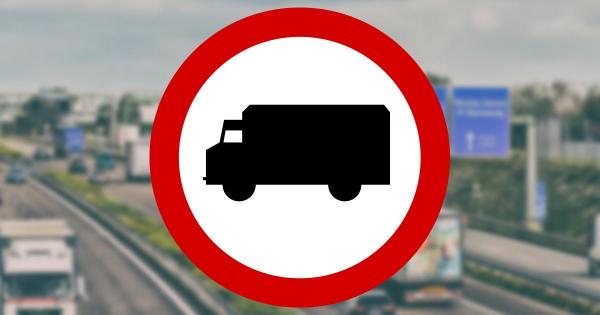
The ban was supposed to begin in a few hours, but the Hungarians have once again postponed the start of the restrictions
It might not come as a surprise, as it’s becoming quite common, but just a few hours before the truck driving ban was set to begin, the Hungarian Ministry of Construction and Transport has decided to postpone it once again.
According to the statement, today’s ban (October 22), which was supposed to start at 10:00 PM, has been canceled. Tomorrow’s restrictions (October 23) have been postponed by 6 hours and will now take effect at 6:00 AM instead of midnight. The ban will last until 10:00 PM.
Restriction schedule:
❌ October 22 (Tuesday) – No restriction
❌ October 23 (Wednesday) – 06:00 to 22:00.
Another such situation might occur in a few days, when the Hungarian restrictions will span four days (October 31 and November 1, 2, and 3). We will keep you informed of any changes as they happen.
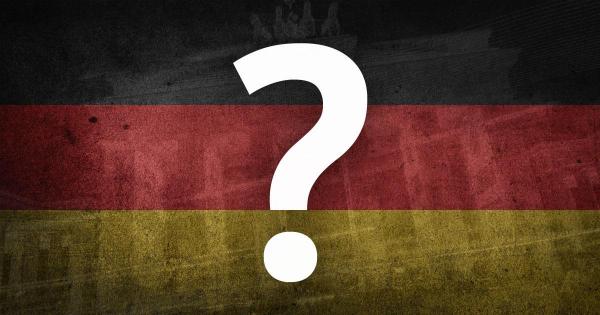
Germany: all you need to know about driving bans on 31 October and 1 November
HGV driving bans in Germany on these two days may be rather confusing, which is not surprising given the fact that both holidays are celebrated only in selected federal states, and the hours of the bans vary depending on the region. However, to make life easier for truck drivers, the authorities introduce derogations that allow them to cross the state where the ban is in effect without having to stop for two days.
Basic facts:
❌ Thursday, October 31, Reformation Day is a public holiday in the states of Brandenburg, Bremen, Hamburg, Mecklenburg-Vorpommern, Lower Saxony, Saxony, Saxony-Anhalt, Schleswig-Holstein and Thuringia. The ban is in effect from 00:00 to 10:00 PM, except for Lower Saxony, where it starts from 06:00 and lasts until 10:00 PM.
❌ Friday, November 1, All Saints’ Day is is a public holiday in the states of Baden-Württemberg, Bavaria, North Rhine-Westphalia, Rhineland-Palatinate and Saarland. The ban is in effect from 00:00 to 22:00, except in North Rhine-Westphalia, where it starts from 06:00 and lasts until 10:00 PM.
Exceptions in Lower Saxony and North Rhine-Westphalia
Until 2025, special regulations regarding Reformation Day and All Saints’ Day apply in the states of Lower Saxony and North Rhine-Westphalia. Reformation Day (October 31) is a public holiday in Lower Saxony,, while All Saints’ Day (November 1) is a public holiday in North Rhine-Westphalia.
To make sure that lorry drivers traveling through Lower Saxony and North Rhine-Westphalia are not banned from driving for 2 days in a row, the hours when the ban is in effect have been changed. On both holidays, the ban will last from 6:00 AM to 10:00 PM.
In addition, both federal states allow lorries to use the main transit routes along A 1, A 2, A 30, A 31 and A 33 during a public holiday when the ban is in effect. Listed below are motorway sections where HGV traffic is allowed between 6:00 AM and 10:00 PM on public holidays in Lower Saxony or North Rhine Westphalia:
➡️ A1 – from the Lotte/Osnabrück junction to the border of North Rhine-Westphalia and Lower Saxony near the Osnabrück-Nord junction and in the opposite direction.
➡️ A2 – From the Bad Oeynhausen junction to the border between Lower Saxony and Saxony-Anhalt and in the opposite direction.
➡️ A 30 – from the Bad Bentheim border crossing to the Bad Oeynhausen intersection with the A2 motorway and in the opposite direction.
➡️ A31 – from the Schüttorf motorway junction to the border between Lower Saxony and North Rhine-Westphalia and in the opposite direction.
➡️ A33 – from the Osnabrück-Süd motorway junction to the Dissen-Süd junction and in the opposite direction.
Additional derogation in North Rhine-Westphalia
In contrast to North Rhine-Westphalia, there is no driving ban on All Saints’ Day in the state of Hesse. For practical reasons, drivers travelling through North Rhine-Westphalia via the shortest route between two points in Hesse will not be fined for violating the driving ban on All Saints’ Day. Drivers should use the designated “transit section” of the A44 motorway (junction 65), from the state border at kilometre 43.2 to the state border at kilometre 28.4.
Transit traffic to and from the state of Berlin on Reformation Day (31.10)
In contrast to the neighbouring state of Brandenburg, there is no driving ban on Reformation Day in the state of Berlin. By virtue of an agreement with the states of Brandenburg, Mecklenburg-Vorpommern, Saxony, Saxony-Anhalt and Thuringia, HGV traffic on 31 October is permitted along A2, A20, A24, A4, A9, A10, A11, A12, A13, A14, A15, A17, A19, A38, A71, A72, A73, A111, A113, A114, A115, A117, A143, provided the place of departure or the place of destination is located in the state of Berlin.
Trucks are not allowed to leave the designated motorways in the states where the holiday driving ban is in effect, unless the motorway is completely closed following an accident or owing to road works. In such cases, trucks are allowed to follow designated diversion routes. If no diversion is indicated, drivers should use the shortest route to the nearest motorway junction. A truck is also allowed to leave the motorway in case of a mechanical failure. It should then be towed to the nearest suitable place where it can be safely parked.
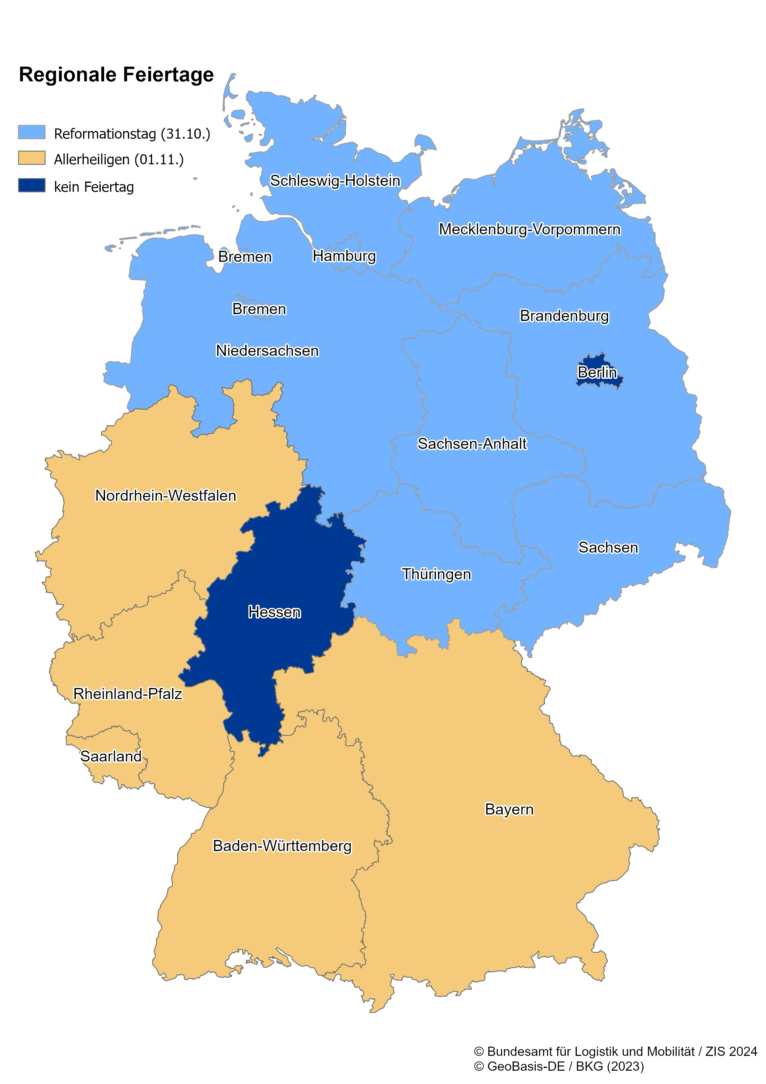

German Unity Day on October 3 with HGV restrictions also in Austria and Luxembourg
Since German Unity Day is a nationwide public holiday, there is a driving ban for vehicles with a GVW over 7.5 tons, which is in effect along the entire road network from 00:00 to 10:00 PM.
⭕ Germany – the HGV driving ban will apply from 00:00 to 10:00 PM along the entire road network in all federal states. For a list of exceptions, click HERE.
In order to prevent traffic jams at the borders, Austria and Luxembourg have also introduced restrictions on HGV traffic on this day.
⭕ Austria – the HGV driving ban will be in effect on the A13 motorway towards Germany from 00:00 to 10:00 PM. For a list of exceptions, click HERE.
⭕ Luxembourg – the HGV driving ban will be in effect on all roads leading to Germany between 00:00 and 9:45 PM. For a list of exceptions, click HERE.

Czechia: D1 reopened, with a speed limit on around exit 370
The section of D1 motorway near Ostrava – Svinov has been reopened, which means that traffic on the motorway can continue as usual, except for a 60kph speed limit ona 2-kilometer section around exit 370.
The I/60 road has also been reopened in the morning. However, in two places before and at the beginning of Vápenná, traffic will have to continue on the hard shoulder until repairs on the main road have been completed.
Similar difficulties can be expected on the I/44 in the Česká Ves area and the I/46 in Opava, where the bridge is still closed and only accessible to pedestrians.
Oznacz jako wykorzystany

Poland: the bridge on the Oder in Krosno Odrzańskie closed to HGV traffic
In response to a request from the authorities of Krosno Odrzańskie, the Ministry of Infrastructure has introduced a temporary ban for HGV traffic on the bridge across the Oder river.
The ban came into effect at 11:00 p.m. on September 19, and applies to all vehicles in through traffic.
The measure has been introduced to improve traffic flow and reduce traffic jams in connection with the expected flood wave on the Oder. Diversions have been designated, and drivers are asked to follow the new road signage.
This ban will also facilitate the transport of materials such as sand and water-blocking walls, which are used to protect the town from the upcoming flood wave. Emergency service vehicles are exempt from the ban.

Traffic disruptions in Belgium, Germany, France and the RD66 between France and Spain
Traffic disruptions are expected in Belgium (Liège E25-E40/A602 connection and in the Ruppel tunnel on the A12), in Lower Saxony and Saxony-Anhalt, Dresden, in France on the RN134 leading to the Somport tunnel and on the section of the RD66 between France and Spain (for special transports).
Belgium
⭕ Due to maintenance work, the Liège E25-E40/A602 connection between junction 35 “Avroy/Laveu” and junction 39 “Chênée” (in both directions) will be completely closed from 10:00 PM (gradual closure from 8:30 PM) until 6:00 AM (gradual reopening from 5:00 AM) on the following nights:
– from Sunday, 15 September, to Monday, 16 September,
– from Monday, 16 September, to Tuesday, 17 September,
– from Tuesday, 17 September, to Wednesday, 18 September,
– from Wednesday, 18 September, to Thursday, 19 September,
– from Thursday, 19 September, to Friday, 20 September,
– from Monday, 23 September, to Tuesday, 24 September.
Traffic will be diverted via the A604, routes S1 and B.
⭕ Work in the Ruppel Tunnel (A12) towards Brussels will begin on Monday, 16 September. In order to minimise disruptions to traffic, work will be carried out at night. From Monday evening to Saturday morning, between 8:00 PM and 6:00 AM, the tunnel tube in the direction of Brussels will be closed. Traffic in both directions will be possible via the second tube on narrowed lanes. In February 2025, preparations will start in the tunnel tube towards Antwerp. The work will last around 120 nights and, if the conditions are favourable, will be completed by the end of April 2025.
Germany
⭕ The sugar beet harvest has started in Lower Saxony and Saxony-Anhalt, which means that trucks and tractors pulling trailers with sugar beets will be frequently travelling on many roads in the region. As a result, traffic disruptions can be expected, especially on national and county roads. During the sugar beet harvest, caution is advised, especially near the sugar factories in Clauen, Klein Wanzleben, Könnern, Nordstemmen, Schladen, Uelzen and Zeitz.
Advice for drivers:
• Increase your vigilance! Beetroot can lie anywhere on the road or fall off a truck right in front of your car. If you keep a greater distance, you will be able to react in time.
• Allow more time for your commute (at least 15 to 30 minutes).
• Beetroot dirt makes roads greasy and slippery during rain. So take your foot off the gas.
• Only overtake when there is definitely no vehicle coming from the opposite direction.
• Be even more careful in darkness and fog. Beetroot transports also take place at night.
⭕ For reasons still unknown, the Charles Bridge in Drsden partially collapsed in the early morning on September 11. A 100-meter section of the bridge section used by trams fell into the Elbe River. Emergency services have closed the entire area around the bridge and the bridge itself.
⚠️Teilabschnitt der #Carolabrücke in #Dresden eingestürzt! Der gesamte Bereich um die Carolabrücke, die Bundeswasserstraße #Elbe sowie der #Elberadweg und das #Terrassenufer sind für den Verkehr komplett gesperrt!